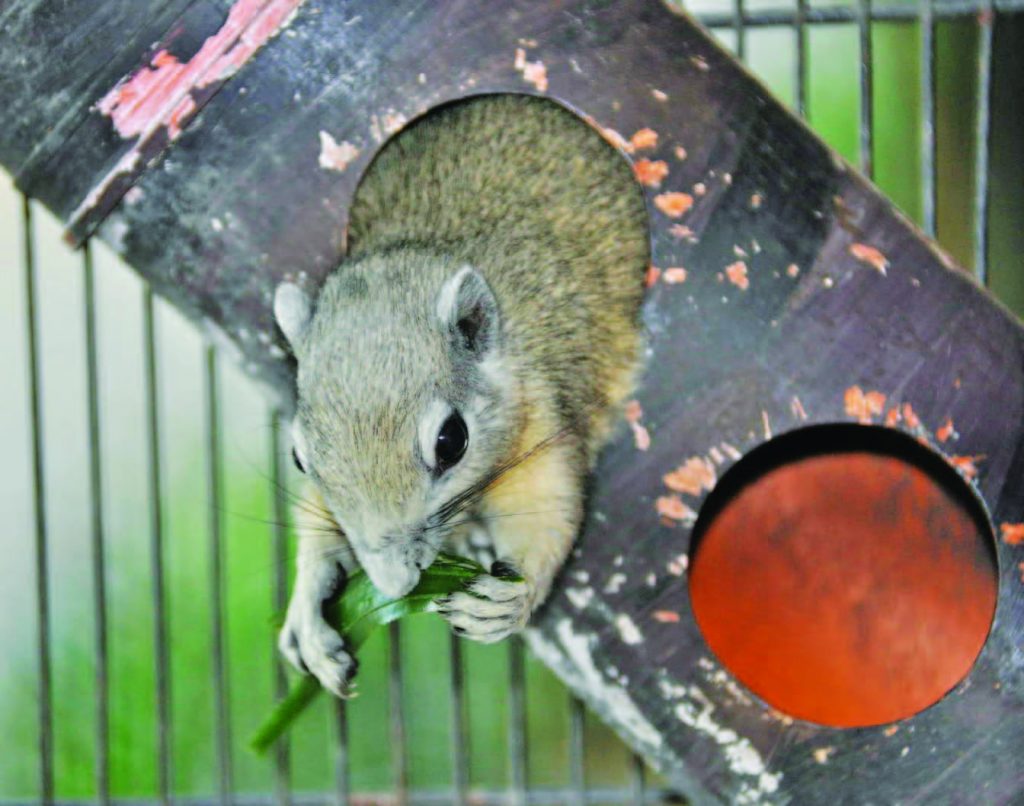Did you know that the Philippines has its own endemic squirrel species? The Philippine tree squirrel (S. philippinensis) is found in Mindanao and adjacent islands, such as Bohol, Leyte, Samar, and Siargao, according to a 1998 article by Lawrence Heaney, published in Fieldiana Zoology. One can find them in a very wide variety of habitats, ranging from forests to agricultural areas.
The defining characteristic used to determine whether a squirrel is a “tree squirrel” is their habitat rather than physiology. Tree squirrels live among trees, as opposed to those that live in burrows or among rocks.

However, many tree squirrels have adapted to human environments, such as rural farms, suburban backyards, and urban parks. Squirrels are diurnal: they are active during the daytime, which is why they have become a familiar sight to humans.
High Standards
The Philippine tree squirrel can be found at elevations up to 2,100 meters, such as on Mt. Hamiguitan, located at the Pujada Peninsula within the Eastern Mindanao Biodiversity Corridor in Davao Oriental, which was designated as the country’s sixth World Heritage site in June 2014.

Aside from the Philippine tree squirrel, other wild endemic fauna like the Hamiguitan hairy-tailed rat, Philippine palm civet, Philippine field rat, the Mindanao wild pig, and the Philippine deer call it home alongside the Philippine eagle, the Mindanao bleeding heart dove, the Philippine cockatoo, and the rare Delias magsadana butterfly.
They can be found in tree cavities, or high up in the trees in spherical nests constructed out of twigs, leaves, and shredded bark. Squirrel nests are called “dreys”, and are often built in tree crotches about 30 to 45 feet above ground.
Double take
Distinct from the “bising” (otherwise known as the Palawan tree squirrel or red-tailed squirrel) which is also found in the Philippines, the Philippine tree squirrel is brown on its back, with a reddish eye ring, a gray to dull orange brown venter, and an annulated tail. It grows to a length of 193 millimeters, and usually weighs up to 244 grams.
Recently, squirrels have been spotted in Luzon, particularly in the suburbs of Metro Manila, although they are not endemic to this area. While many of them have been identified as the Culion tree squirrel (S. moellendorffi), which is also endemic to the Philippines, instances of bising and the Philippine tree squirrel have also been reported.
Pet or Pest?
The Philippine tree squirrel is common in the local pet trade, and is sometimes also hunted locally for food, although the effects of both activities on population size is not yet known. Pet trade is illegal, but unfortunately is not often enforced.

Squirrels are generally inquisitive and persistent animals, and may even can be notorious pests, because of their propensity to chew on various edible and inedible objects. They constantly gnaw on things to keep their teeth sharp. They can even chew through plastic and metal to get to food. They can cause damage around homes and gardens and can gnaw into telephone or electrical cables. They can even invade homes through gaps or broken screens.
The Philippine tree squirrel is sometimes known as an agricultural pest, like many rodents, and can damage crops. They can also strip the bark off of trees to feed on the tree’s cambium or juicy inner bark layer, which can cause injury to the trees.
Leave ‘em Be
Dr. Juancho Bunyi, assistant health officer of Muntinlupa City, warned that squirrels belong to the rodent family and are considered pests. He said that a squirrel bite can cause high fever or tetanus, which can lead to severe complications and even death. He also warned that even squirrel fur may aggravate certain conditions, such as asthma.
[They may seem destructive to us, but only because their natural behavior is inconvenient to our way of life. Perhaps we need to reexamine what we consider “pest” behavior. Whatever we think of them, the lesson is clear: It’s best for both man and squirrel for the former to leave the latter alone.-Ed.]
This appeared in Animal Scene magazine’s January 2019 issue.





